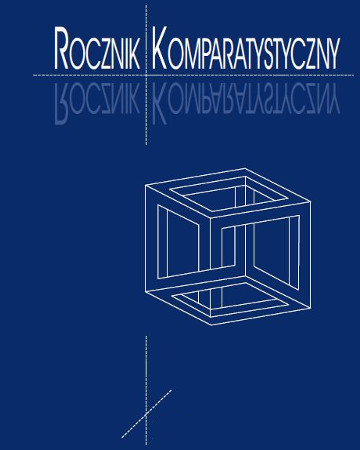





| Autorzy: |
Mirosława
Kozłowska

Uniwersytet Szczeciński |
| Słowa kluczowe: | teatr popularny teatr ludowy Romain Rolland Jędrzej Cierniak |
| Data publikacji całości: | 2021 |
| Liczba stron: | 23 (71-93) |
CytowanieKozłowska, Mirosława. „Koncepcje teatru ludowego. Romain Rolland i Jędrzej Cierniak”. RocznikKomparatystyczny 12 (2021): 71–93. DOI: 10.18276/rk.2021.12-03
| 1. | Abramowski, Edward. „Co to jest sztuka? (Z powodu rozprawy L. Tołstoja Szto takojeisskustwo?). Tegoż. Wybór pism estetycznych. Wprowadzenie, wybór i oprac. Krystyna Najder-Stefaniak. Kraków: Universitas, 2011. 3–44. |
| 2. | Cierniak, Jędrzej. Źródła i nurty polskiego teatru ludowego: wybór pism, inscenizacji i listów. Oprac. Antoni Olcha. Warszawa: Ludowa Spółdzielnia Wydawnicza, 1963. |
| 3. | Deobord, Guy. Społeczeństwo spektaklu oraz Rozważania o społeczeństwie spektaklu. Tłum. i wstęp Mateusz Kwaterko. Warszawa: Państwowy Instytut Wydawniczy, 2006. |
| 4. | Fuchs, Georg. „Uroczyste przedstawienie ludowe”. Tegoż. Scena przyszłości. Tłum. i oprac. Małgorzata Leyko. Gdańsk: słowo/obraz terytoria, 2004. 133–156. |
| 5. | Grzelak, Agnieszka. „Przestrzeń interdyscyplinarnej rozmowy. Mieczysława Limanowskiego koncepcja kultury”. Mieczysław Limanowski. Człowiek, twórca, świadek czasów. Red. Maria Kalinowska, Andrzej Sadurskiego. Toruń: Wydawnictwo Naukowe Uniwersytetu Mikołaja Kopernika, 1998. 277–296. |
| 6. | Kolankiewicz, Leszek. „Teatr zarażony etnologią”. Konteksty. Polska Sztuka Ludowa 3–4 (1991): 13–22. |
| 7. | Leyko, Małgorzata. Reżyser masowej wyobraźni. Max Reinhardt i jego „teatr dla pięciu tysięcy”. Łódź: Wydawnictwo Uniwersytetu Łódzkiego, 2002. |
| 8. | Limanowski, Mieczysław. Był kiedyś teatr Dionizosa. Wybór, wstęp i oprac. Zbigniew Osiński. Warszawa: Instytut Sztuki Polskiej Akademii Nauk, 1994. |
| 9. | ------. „Istota kultury”. Kultura wsi. Biuletyn XIII Konferencji Oświatowej poświęconej zagadnieniom kultury wiejskiej w Polsce. Warszawa 1930. 13–47. |
| 10. | O zespole Reduty 1919–1939. Wspomnienia. Warszawa: Czytelnik, 1970. |
| 11. | Rolland, Romain. Teatr ludowy. Tłum., wstęp i oprac. Piotr Olkusz. Gdańsk: słowo/obraz terytoria, 2008. |
| 12. | Simon, Ludwik, oprac. Spis przedstawień Zespołu Reduty w ciągu dziesięciu lat 1919–1929. Repertuar. Wilno: Nakładem Zespołu Reduty, 1929. |
| 13. | Wąchocka, Ewa, Dorota Fox, Aneta Głowacka, red. Teatr historii lokalnych w Europie Środkowej. Katowice: Wydawnictwo Uniwersytetu Śląskiego, 2015. |
| 14. | Ziejka, Franciszek. „Racławickie kosy”. Tegoż. „Wesele” w kręgu mitów polskich. Kraków: Wydawnictwo Literackie, 1977. 184–206. |